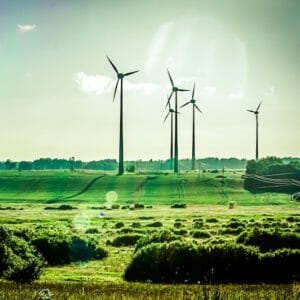As we continue to witness the devastating impacts of climate change, there is a consensus that we as a human population need to transition to a more sustainable way of living. But with so many ideas and proposals, how do we decide which pathways are best? Experts from Arizona State University have created a tool to help: The Sustainable Future Scenarios (SFS).
According to a new paper published in the journal of Landscape and Urban Planning, “The co-production of sustainable future scenarios,” the SFS “offers guidance to co-produce visions and transition pathways of positive futures that develop and integrate interventions for sustainability transformations of social-ecological-technological systems.”
In other words, it offers direction on how to compare and contrast different strategies on transitioning to a more sustainable future. The authors of the paper, including researchers and SFS leaders David Iwaniec, Nancy Grimm, Elizabeth Cook and Marta Berbés-Blázquez from the Julie Ann Wrigley Global Institute of Sustainability, explain that the framework utilizes three unique scenarios: strategic, adaptive and transformative. The strategic scenario focuses on what is feasible, the adaptive scenario focuses on improving resiliency and the transformative scenario focuses on radical goals. All the scenarios provide users of the tool with an opportunity to explore a range of possibilities from what is plausible to what is desirable.
To test out the tool, the scientists applied their framework to the Central Arizona-Phoenix Long-term Ecological Research (CAP-LTER) urban site, using the site as a case study. At the conclusion of the project, the scientists had devised one strategic scenario and co-developed three adaptive scenarios and three transformative scenarios for the years 2015 to 2060.
The SFS is a transdisciplinary research project, involving numerous universities and their departments including the ASU Wrigley Institute, the School of Environmental Sciences at the University of Guelph in Ontario, and the Environmental Science Department at Barnard College in New York. Additional authors on the journal article are Melissa Davidson, Matei Georgescu, E. Scott Krayenhoff, Ariane Middel and David Sampson.
